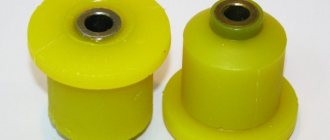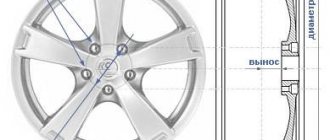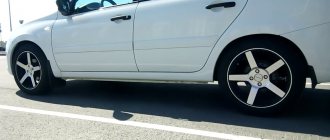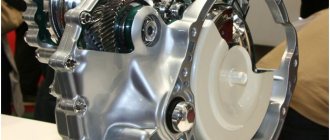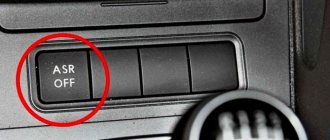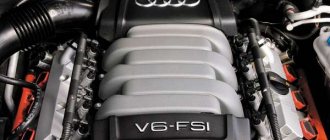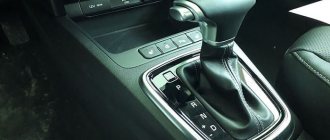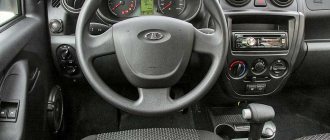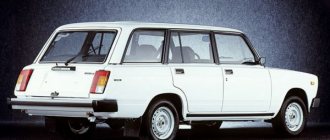Modern car tires are high-tech and strictly separated by purpose. The sidewall of the wheel contains a lot of useful information that not every user can decipher. For example, the inscriptions “standart”, “performance” and “high performance” are not clear to everyone. However, it is these designations that determine the direct purpose of the tires.
Standard tires are used for urban conditions. Most often these are tires for compact cars. But the next two designations refer to low-profile tires. These are tires that are used for high-speed driving.
Low profile tires
When understanding what tires are considered low-profile, it is worth considering that this is a type of tire in which the height of the side element is less than the width of the tire. Typically this figure varies from 45 to 55. Such tires are used for sports car models and are used to make the car stand out from the crowd or improve sports performance. Often such tires are installed on racing car models, because they help reduce slipping on the track.
Marking on the tire
General description:
- A certain speed index is from 210 to 240 km/h, indicated by the symbols H or V.
- This indicator is indicated by the second digit after the division line in the marking. For example, in the marking 215/36 R17, the number 36 indicates the ratio of the width of the tire to the height of its profile, and the symbol R indicates the size. In this example you can see that the tire is low profile.
- Good ride quality on the highway. This is noticeable by the good grip on the road.
Additional Information!
This type of tire involves the installation of larger brake discs, which improves the braking process.
Why is it needed at all?
To be honest, now almost all tires can be called low-profile, because the width of the wheel will almost always be greater than the height of the cord. That’s why there are sizes with cord heights of 50, 55, 60, 65, 70, 75, etc. But it is very rare to find a tire where the height and width of the wheel were the same! Let's say R18 255/100, as is clear, the width here is equal to the profile height. These tires are used primarily on large SUVs, or all-terrain vehicles, for driving in marshy areas. Here is an example of Interco Bogger tires, its height and width are equal, this tire in the photo has a dimension of R16 255/100
BUT such tires in the city are useless, and I would even say harmful (using them in difficult - swampy - snowy areas)! After all, in the city, most of the roads are asphalted and smooth, and such tires will not allow you to move quickly and economically; the car will have to push this tire with force, because it is heavy and relatively soft and wrinkles very much (something like a pillow, due to the high profile). However, these types can withstand the maximum weight or load index, which is why they are installed on large vehicles (trucks, tractors, large buses).
That's why the second type was invented - a low-profile tire, specifically for urban use. After all, the lower the height of the wheel, the stiffer the wheel, and accordingly it rolls better, contributes to the stability of the car (especially in corners), and fuel consumption is also reduced (and decently). These types can be used to move quickly on asphalt roads; the speed index is usually quite high. But such rubber will not be able to support a lot of weight, it is not for commercial vehicles (almost always installed on passenger cars), it is absolutely useless off-road, all because it is hard, and the tread is not designed to “dig” dirt or snow. In general, my advice to you is not to get into serious mud with such tires, even if you have an all-wheel drive SUV!
The main pros and cons of 15-inch low profile tires
Fifteen-inch model
Like any other tire, 15-inch low-profile tires have their advantages and disadvantages. The following are considered advantages for many motorists:
- Better grip.
- Good maneuverability and smooth cornering.
- High-quality braking.
- Low resistance to the movement process.
- Saving gasoline.
- In combination with lightweight wheels, it reduces the overall bulk of the car and improves dynamics.
- Installing low-profile tires makes it easier to gain speed.
Important!
These advantages of low-profile tires are complemented by a special tread pattern and a soft rubber base. Most often, high-speed types of rubber have a directional tread pattern and a durable bead.
As for the disadvantages, they are also worth mentioning:
- Low service life.
- Low level of comfort - tires are very sensitive to various irregularities on the road.
- Noise level - the contact patch of these models is increased, which leads to increased extraneous sounds. This effect is also caused by the directional tread pattern.
- Excessive pressure on the suspension - hard driving injures the vehicle's chassis.
- Weight - If your car does not have power steering, this can affect cornering, reducing the quality and smoothness of your turn.
- Narrow scope of application - you should not install them for city trips.
- They are not intended for driving in rainy weather, as they have the property of aquaplaning or a hydrodynamic wedge, i.e. when driving in the rain, grip on the road deteriorates.
Additional Information!
Considering the pros and cons of low-profile 15-inch wheels, before purchasing you should decide on the basic road conditions and driving style, and then you can decide to purchase them. It is advisable that shiny discs be purchased with them.
Flaws
The disadvantages of such rubber are also related to its height. The lower the tire profile, the correspondingly lower the height of the tire sidewall, which means the lower the tire’s shock-absorbing ability to reduce vibrations from the road. As a result, all road irregularities are immediately felt on the steering wheel, which is why such low-profile tires are not suitable for roads with low-quality surfaces.
The lack of necessary shock absorption can lead to more tragic consequences than loss of comfort, since, for example, the load on the car’s suspension increases. It is also worth remembering that the transition to low-profile tires is always accompanied by an increase in the mounting diameter of the rims, which means that it is necessary to purchase a new set of rims. In addition, low-profile tires themselves tend to be more expensive.
Which tires are considered low profile and why?
Model size 205/55 R16
Tires with a cross-section height higher than 0.55 and less than 0.8 inches are considered low-profile. Low-profile tires include rubber with the following nomenclature:
- 205/55 R16;
- 205/45 R17;
- 225/40 R18.
Additional Information!
To the same list you can add the range of low-profile tires R17.
How to choose?
Although some motorists independently select tires in accordance with the wheels that were purchased for the car, it would be better to follow the recommendations of the vehicle manufacturer if you do not want to frequently repair the car due to installing the wrong wheels.
Typically, when releasing a new car model, the automaker indicates which tires can be installed on it. The list may contain several different options that will not critically affect the car’s chassis and suspension. This list also includes a low-profile option.
Here is a small example of such a list:
| Car model: | Standard: | Analogue: | Tuning: |
| Volkswagen Golf V (2005) | 195*65r15 | 205*60r15; 205*55r16 | 205*50r17; 225*45r17; 225*40r18; 225*35r19 |
| Audi A6 quattro (2006) | 225*55r16 | 225*50r17 | 245*45r17; 245*40r18; 245*35r19 |
| BMW 3-Series (E90) (2010) | 205*55r16 | 205*60r15; 225*50r16; 205*50r17; 215*45r17; 225*45r17; 215*40r18; 225*40r18; 245*35r18; 255*35r18; 225*35r19; 235*35r19 | Front (rear): 225*45r17 (245*40 r17); 225*45r17 (255*40r17); 215*40r18 (245*35 r18); 225*40r18 (255*35 r18); 225*35r19 (255*30r19); 235*35r19 (265*30 r19); 235*35r19 (275*30r19) |
| Ford Focus (2009) | 195*65*r15; 205*55r16 | 205*60r15; 205*50r17; 225*45r17 | 225*40r18 |
Manufacturers and examples of models
Here is a ranking of the best low-profile tire manufacturers:


